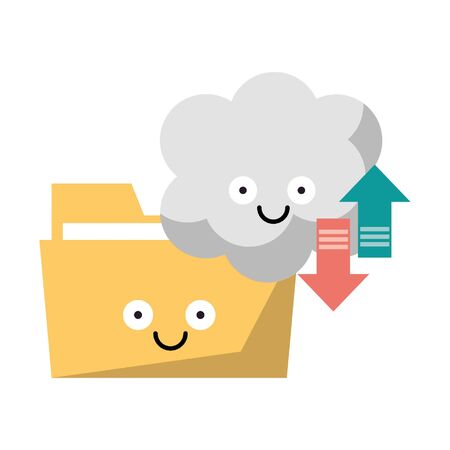Introduction to Weather Challenges for UK Walkers
Walking in the UK offers a unique blend of breathtaking landscapes, from rugged coastlines to rolling hills and remote moorlands. However, these beautiful environments come with their own set of weather-related challenges. The British climate is famously unpredictable, with conditions that can shift dramatically within the span of an hour. Walkers may find themselves starting a hike under clear skies, only to encounter sudden downpours, gusty winds, or dense fog before reaching their destination. Such rapid changes demand vigilance and adaptability.
This volatility makes reliable weather tracking absolutely essential for anyone heading outdoors in the UK. Not only does it enhance safety by helping walkers avoid dangerous storms and unexpected rainfall, but it also allows for better planning and overall enjoyment of each outing. Whether you are traversing the Lake District’s fells or exploring the Scottish Highlands, being well-prepared for whatever the weather brings is a cornerstone of a successful walking experience. In this article, we will explore the essential weather apps and tools every UK walker should have at their fingertips to monitor changing conditions and make informed decisions on the trail.
2. Must-Have UK Weather Apps for Walkers
When venturing out onto Britain’s diverse trails, reliable and up-to-date weather information is essential for both safety and enjoyment. As an experienced walking leader, I have found that certain apps stand out in their accuracy, user interface, and relevance to UK-specific conditions. Below is a curated list of top weather apps trusted by British walkers:
| App Name | Key Features | UK Accuracy | User Experience |
|---|---|---|---|
| Met Office Weather | Official UK forecasts, severe weather warnings, rainfall radar, mountain weather updates | Excellent (government data) | Intuitive design, easy location search, tailored alerts |
| BBC Weather | Hourly and 10-day forecasts, regional focus, live updates | Very good (UK-centric data) | Clear layout, custom locations, reliable notifications |
| Rain Today by MeteoGroup | Real-time rain radar, minute-by-minute precipitation tracking, push alerts | Highly accurate for rainfall timing and intensity | Sleek radar maps, quick load times, focused on precipitation |
| Yr.no | Detailed forecasts from Norwegian Meteorological Institute, global coverage with UK granularity | Consistently accurate for temperature & wind; variable for showers | Straightforward interface, multi-language support, customisable charts |
| Windy.com | Advanced wind/rain/cloud maps, interactive layers for planning exposed walks or ridge routes | Reliable for wind and storm prediction across the UK | Professional-grade visuals, may require a learning curve for new users |
Local Relevance and Real-Time Updates Matter Most
The unpredictable nature of British weather—especially in upland or coastal areas—demands more than just basic sunshine or rain predictions. The best apps combine hyper-local radar data with government-issued warnings to offer actionable insights. For example, the Met Office app frequently issues mountain-specific alerts which are invaluable when planning routes in the Lake District or Snowdonia. Similarly, Rain Today excels at pinpointing showers down to the minute—a crucial advantage when timing your walk to avoid getting caught in sudden downpours.
User Experience: Clarity and Reliability Under Pressure
A key consideration for walkers is how quickly vital information can be accessed mid-walk or during deteriorating conditions. Apps like BBC Weather and Met Office have invested in streamlined interfaces that prioritise clarity. This enables you to check the likelihood of storms or heavy rain at a glance—even with cold fingers on a windswept hillside.
The Value of Multiple Sources: Cross-Referencing Data for Safety
No single app is infallible; seasoned walkers often cross-reference two or three sources before committing to a route. By combining national agency forecasts with real-time radar tools like Rain Today or Windy.com’s visual overlays, you gain a comprehensive picture of developing weather fronts. This informed approach minimises surprises and maximises both safety and enjoyment on Britain’s beautiful but changeable footpaths.

3. Live Rain and Storm Tracking Tools
For walkers traversing the UK’s ever-changing landscapes, having access to live rain and storm tracking tools is indispensable. These platforms empower you to adapt your plans dynamically, ensuring your safety and comfort regardless of unpredictable British weather. Leading apps and web-based services now offer highly detailed radar imagery, which allows users to monitor precipitation bands, storm cells, and cloud cover in real time. Notable platforms such as the Met Office Weather app, Rain Radar UK, and Weather & Radar provide interactive maps that display the movement of rain showers and thunderstorms across specific regions, down to localised postcodes.
These tools stand out for their accuracy and granularity. High-resolution radar loops let you visualise approaching weather fronts, giving you a practical edge when deciding whether to delay your walk or seek shelter. Many apps also integrate with the UK’s official warning systems, pushing notifications about yellow, amber, or red alerts directly to your device. This immediate access to localised weather warnings—such as flood risks or high winds—enables more informed decisions on route planning and safety protocols.
For groups and walking leaders, these features are particularly valuable. By monitoring live radar updates during a walk, you can communicate timely information to your group and adjust your itinerary responsively. It is advisable to familiarise yourself with the functionalities of these platforms before heading out; practice interpreting radar images and understanding alert levels so you can act promptly when adverse conditions develop. Ultimately, integrating live rain and storm tracking tools into your pre-walk checklist significantly enhances preparedness, allowing you to experience the beauty of Britain’s outdoors while minimising risk.
4. Interpreting UK Met Office Data
For UK walkers, the Met Office stands as the gold standard for authoritative weather information. Understanding how to access and interpret its data is crucial for planning safe and enjoyable walks, particularly when navigating the country’s famously changeable conditions.
Accessing Official Met Office Data
The Met Office provides several user-friendly platforms suitable for walkers of all experience levels:
| Platform | Access Method | Best Use Case |
|---|---|---|
| Met Office Website | Desktop/Mobile Browser | Detailed forecasts, live radar, weather warnings |
| Met Office Mobile App | iOS/Android App Store | On-the-go updates, location-based alerts |
| Email & SMS Alerts | Sign up via Met Office site | Advance severe weather notifications for specific regions |
| Social Media Channels | @metoffice on Twitter, Facebook, etc. | Real-time updates and community insights |
Making Sense of Regional Forecasts
The UK’s microclimates mean that weather can vary dramatically between regions—even within a single county. To make informed decisions, always consult regional forecasts rather than relying solely on national summaries. The Met Office offers:
- Regional Overviews: Found under “UK Forecasts” on their website or app—ideal for understanding broader patterns affecting your chosen walking area.
- Localised Hour-by-Hour Details: Enter your postcode or trailhead location to view tailored short-term predictions, temperature shifts, and rainfall probabilities.
- Interactive Rainfall Radar: Visual tools allow you to track approaching showers and storms in real time, which is especially valuable for planning rest stops or emergency shelters.
Navigating Severe Weather Alerts
The Met Office issues colour-coded warnings (Yellow, Amber, Red) for rain, wind, snow, and other hazards. Walkers should pay close attention to these alerts before setting out:
| Alert Level | Description | Recommended Action for Walkers |
|---|---|---|
| Yellow Warning | Be aware; potential disruption in specific areas. | Check route alternatives; pack additional waterproofs and supplies. |
| Amber Warning | Be prepared; heightened risk of disruption and danger. | Consider postponing or rerouting your walk; inform someone of your plans. |
| Red Warning | Take action; widespread dangerous conditions expected. | Avoid walking altogether; follow official advice closely. |
Top Tips for UK Walkers Using Met Office Data:
- Refresh frequently: Conditions can shift rapidly—always check latest updates before departure and during your walk if possible.
- Add locations: Save key waypoints in the Met Office app for instant access to localised forecasts along your planned route.
- Mental note of timing: Pay attention to forecasted “windows” of better weather when planning breaks or summit attempts.
This systematic approach to interpreting Met Office data enables walkers to adapt quickly to changing British weather while maximising both safety and enjoyment on the trail.
5. Integrating Maps and Weather for Route Planning
One of the most effective ways to ensure a safe and enjoyable walking experience in the UK is by combining weather apps with digital mapping tools during your route planning process. British weather is notoriously changeable, with conditions shifting rapidly even over short distances. To manage this unpredictability, it is advisable to use platforms such as OS Maps or Komoot in conjunction with reliable weather forecasting services like the Met Office app or BBC Weather.
Synchronising Data for Real-Time Decisions
Many modern mapping applications allow you to overlay real-time weather data directly onto your planned routes. For instance, you can check the hourly rainfall forecasts or wind speeds for specific waypoints, enabling you to anticipate and avoid potential hazards such as flooded paths or exposed ridges during storms.
Adapting Routes Based on Conditions
Before setting out, examine the forecasted conditions for each section of your walk. If heavy rain is expected on higher ground, consider rerouting to lower, sheltered alternatives. Similarly, if storms are predicted later in the day, plan to reach vulnerable sections earlier or have contingency exit points mapped out.
Practical Tips for UK Walkers
Always download offline maps and weather updates before heading into remote areas where mobile reception may be limited. Mark potential shelters and escape routes on your map, and share your itinerary with someone you trust. By thoughtfully integrating weather forecasts with detailed route planning, you can enhance both your safety and confidence whilst exploring Britain’s diverse landscapes.
6. Practical Tips from Experienced UK Walk Leaders
Insights from seasoned UK walk leaders highlight the importance of integrating digital weather tools with practical field experience. Firstly, always check multiple reliable apps—such as the Met Office Weather app and Rain Today—before heading out, as cross-referencing forecasts helps identify discrepancies and provides a more comprehensive picture. Carry a fully charged mobile phone and consider a power bank; even the best apps are useless without battery power on long routes.
Be Prepared for Microclimates
UK weather is notoriously changeable, especially in upland or coastal areas where microclimates can develop rapidly. Walk leaders recommend setting location-specific alerts within your chosen app to receive timely updates about approaching rain or storms. This ensures you’re not caught off guard by sudden changes in conditions.
Utilise Real-Time Radar and Nowcasts
Real-time radar features, available in tools like Rain Today or BBC Weather, are invaluable for monitoring developing weather systems while en route. Experienced leaders check these maps during breaks to assess if it’s necessary to alter their planned route or seek shelter, especially when thunderstorm activity is indicated.
Adapt Plans Responsively
Veteran walk leaders stress the value of flexibility. If apps indicate deteriorating conditions—such as persistent rain or high winds—be prepared to shorten walks, postpone ascents, or reroute via lower ground. Always communicate any changes clearly to your group and make use of group messaging features if reception allows.
Offline Maps and Data Download
Given the patchy mobile signal in some rural or mountainous areas of the UK, download offline maps and relevant weather data before departure. This precaution allows you to reference critical information even when connectivity drops, ensuring continued situational awareness.
Document Learnings for Future Walks
After each walk, review how accurate the forecasts were compared to actual conditions encountered. Share insights with fellow walkers or walking clubs—continuous learning enhances collective safety and preparedness. By combining technology with accumulated local knowledge, UK walkers can confidently manage weather risks on every outing.
